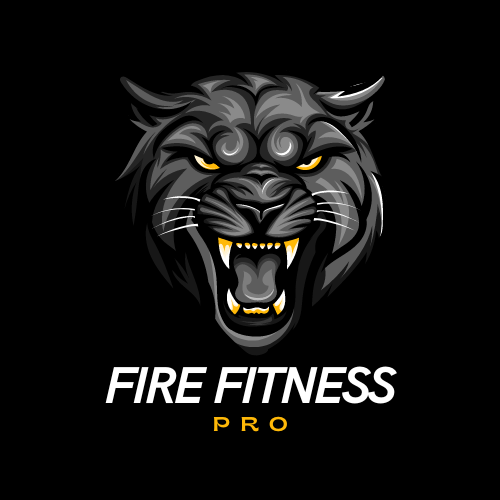In today’s fitness-focused world, unlocking incredible fitness results often entails more than just traditional gym workouts. Introducing Plyometrics for Beginners: A Step-by-Step Guide—this explosive form of exercise, known for its rapid and powerful movements, promises to revolutionize the way you train. Plyometrics not only strengthens your body but also substantially enhances your speed and endurance, making it an effective tool for fitness enthusiasts aiming for a well-rounded workout experience. As you embark on this journey, envision a fitness regimen that evolves with your goals, allowing you to unleash your full potential. In this comprehensive guide, we’ll delve into the essence of plyometrics alongside a step-by-step methodology ideal for beginners to thrive.
A Beginner’s Guide to Plyometrics Workouts
| Exercise | Target Muscle Groups | Benefits | Instructions |
|---|---|---|---|
| Jump Squats | Quadriceps, Hamstrings, Glutes | Improves lower body strength, explosive power | Stand with feet shoulder-width apart, squat down, and jump up explosively. |
| Burpees | Full body (Arms, Legs, Core) | Full-body strength, cardiovascular endurance | Begin in a standing position, squat, kick feet back, perform a push-up, and jump. |
| Box Jumps | Quadriceps, Glutes, Calves, Core | Enhances explosive power, improves lower body agility | Jump onto a sturdy box, land softly with knees bent, then step back down. |
Plyometrics combines high-intensity exercises with dynamic movements, creating a powerful workout that augments strength, speed, and endurance. For those just entering the world of fitness, plyometrics offers exercises that can be easily scaled to accommodate various fitness levels, ensuring accessibility and gradual progression. The core of plyometric training involves key exercises like jump squats, burpees, and box jumps, each targeting different muscle groups while simultaneously boosting cardiovascular health. Understanding that proper form is essential to reap the full benefits without injuries is critical for beginners. As you integrate these workouts into your routine, consistency, rest, and a focus on gradual development will be fundamental to achieving your fitness aspirations through plyometrics.
– Jump Squats: Engage and build leg muscles while increasing overall strength.
– Burpees: Enhance cardiovascular endurance and full-body strength.
– Box Jumps: Improve explosive power and coordination across major muscle groups.
Mastering the proper execution of these exercises will not only aid in preventing injuries but also amplify their effectiveness, empowering you to harness the full potential of plyometric workouts. With patience and persistence, embracing these dynamic exercises will undoubtedly lead to substantial improvements in both personal fitness and overall wellness.
The Essential Guide to Plyometrics—Plus a Sample Workout
| Exercise | Sets | Reps | Rest Time | Difficulty |
|---|---|---|---|---|
| Jump Squats | 3 | 10 | 30 seconds | Beginner |
| Box Steps-ups | 3 | 12 (each leg) | 30 seconds | Beginner |
| Tuck Jumps | 3 | 8 | 45 seconds | Beginner |
Delve into the fundamentals of plyometrics and discover how these exercises can elevate your fitness routine by enhancing strength, power, and agility. Plyometric workouts are rooted in the science of explosive muscle performance, leveraging rapid movements to maximize muscle power. Understanding the principles that govern these exercises will provide a solid foundation for safe and effective practice. Before beginning, it’s crucial to grasp essential safety tips and techniques to ensure proper form, significantly reducing the risk of injury. To assist beginners, a structured plyometric workout plan is presented, meticulously crafted to initiate your fitness journey. As you progress, learning to adapt the intensity and variety of exercises will help to sustain and even enhance fitness results over time.
– Sample Beginner Workout: Incorporates exercises like jump squats, box steps-ups, and tuck jumps.
– Safety Tips: Maintain focus on alignment, start with low heights for jumping exercises, and rest adequately between sets.
By embracing this workout, beginners can kickstart their journey with confidence, gradually refining their technique and scaling up their challenge to align with their growing capabilities. Progressing at your own pace will ensure long-term success and the achievement of extraordinary fitness outcomes.
What Is Plyometrics?

Plyometrics, often referred to as jump training, is an exercise modality centered on explosive movements to boost power and speed. The inherent dynamism of plyometric exercises involves actions like jumping, bounding, and quick directional changes that engage multiple muscle groups simultaneously. Originally designed for athletes seeking enhanced performance, plyometrics can significantly benefit beginners through improved strength, agility, and coordination. Starting plyometrics safely involves mastering the necessary techniques and gradually increasing exercise intensity to prevent injuries.
– Jumping: Stimulates fast twitch muscle fibers for increased explosive power.
– Bounding: Enhances lower body strength and propulsion.
– Directional Changes: Improves agility and coordination for better control.
By integrating plyometrics into your exercise routine, you’ll not only refine cardiovascular fitness but introduce innovative workout challenges that keep the journey engaging and rewarding.
Benefits of Plyometric Training
Plyometric training offers a myriad of benefits, proving invaluable to athletes and beginners alike. The most significant advantage lies in its ability to improve power and speed, crucial elements for success across various sports and physical activities. Additionally, the high-intensity nature of plyometrics induces a metabolic boost, facilitating efficient calorie burning during and after workouts. Through consistent practice, plyometrics enhances coordination and balance, contributing to overall athletic improvement. Moreover, these exercises are essential for fortifying muscles and joints, reducing injury risk during high-impact activities.
– Increased Calorie Burn: Explosive movements lead to a higher calorie expenditure during workouts.
– Enhanced Muscle Power: Develop quick, powerful muscle contractions for better athletic performance.
– Improved Balance: Refine coordination and stability, crucial for day-to-day activities and sports.
Plyometric training is accessible to all fitness levels. With careful adaptation, beginners can progressively attain remarkable fitness improvements, using plyometrics as a versatile tool to transcend personal fitness goals.
2 Types of Plyometric Exercises
| Exercise Type | Focus Area | Example Exercises | Benefits |
|---|---|---|---|
| Explosive | Strength, Speed, Power | Box Jumps, Clap Push-Ups | Builds muscle strength, enhances explosive power, improves speed |
| Reactive | Agility, Coordination, Quick Movements | Ladder Drills, Lateral Bounds | Improves foot speed, coordination, and quick body repositioning |
Plyometric exercises are broadly classified into two types: explosive and reactive, each focusing on improving different aspects of physical performance. Explosive plyometric exercises, such as box jumps and clap push-ups, concentrate on rapid, powerful movements that enhance muscle strength and speed. On the other hand, reactive plyometric exercises emphasize agility and rapid body repositioning, typical examples being ladder drills and lateral bounds. Both exercise types effectively engage fast-twitch muscle fibers, instrumental in honing athletic performance and functional strength.
– Box Jumps: Build explosive power and strengthen the lower body.
– Clap Push-Ups: Enhance upper body explosiveness and coordination.
– Ladder Drills: Improve foot speed and overall agility.
Focusing on a blend of both exercise types can maximize your workout results, ultimately leading to heightened cardiovascular health and functional fitness. For beginners, concentrating on form and steadily increasing the exercises’ intensity is imperative to safe progress and enduring results.
With Plyometric Work, Proper Form is Critical
| Tip | Description |
|---|---|
| Start with Low Heights | Begin with lower jumps to avoid injury and gradually increase difficulty. |
| Focus on Alignment | Maintain a neutral spine and proper knee alignment to protect joints. |
| Rest Between Sets | Ensure adequate rest to allow muscles to recover and prevent overtraining. |
| Use Mirrors or Recordings | Monitor and adjust form to ensure exercises are performed correctly. |
In plyometric training, proper form is non-negotiable, especially for beginners. Focusing on correct technique is fundamental to preventing injuries and optimizing workout efficiency. Prioritizing form allows beginners to harness the full potential of plyometric exercises, ensuring that each session is both safe and beneficial. Tools such as mirrors or recording workouts can assist in monitoring and fine-tuning technique. Additionally, consulting with a fitness professional can offer invaluable advice and direction.
– Mirrors: Enable real-time feedback and form correction.
– Video Recording: Analyze and adjust exercise execution post-workout.
– Professional Guidance: Provides expert insights into technique improvements.
By committing to mastering correct form from the outset, beginners can lay a solid foundation for future plyometric efforts, securing their path to enhanced fitness and minimized injury risk.
A Beginner’s Plyometric Workout

Introducing plyometrics as a high-impact exercise targeting explosive movements is a remarkable strategy to build strength and power efficiently. The benefits extend beyond physical attributes, leading to improved athletic performance, heightened agility, and robust cardiovascular health. However, the significance of proper form and technique cannot be overstated, as they are vital in reducing injury risk and maximizing workout outcomes. A brief yet effective beginner-friendly plyometric workout includes exercises such as jump squats, box jumps, and burpees.
– Jump Squats: Ideal for improving lower body strength.
– Box Jumps: Excellent for enhancing agility and explosiveness.
– Burpees: Combine conditioning with full-body strength development.
By beginning with these low-impact exercises and progressively escalating the intensity, beginners can align their workouts with individual fitness levels and goals, ensuring sustainable progress along their fitness journey.
Increasing Plyometrics Intensity with the Shock Method
| Progression Step | Exercise | Intensity Level | Goal |
|---|---|---|---|
| Step 1 | Basic Jump Squats | Low | Build foundational strength and explosiveness. |
| Step 2 | Box Jumps | Moderate | Improve power and coordination. |
| Step 3 | Shock Jumps | High | Maximize explosive power and neuromuscular activation. |
| Step 4 | Advanced Reactive Drills | Very High | Enhance agility, speed, and body control. |
The Shock Method represents an advanced plyometric technique aimed at enhancing explosive power and workout intensity. Characterized by sudden, high-impact movements, this method optimizes muscle activation, leading to increased strength levels. The challenge presented to the neuromuscular system under this method fosters quicker and more efficient muscle response. For beginners, a gradual introduction to the Shock Method with an emphasis on proper form and safety measures is crucial.
– Progressive Overload: Start with basic jumps before incorporating advanced shock techniques.
– Neuromuscular Activation: Strengthen muscle response for faster, more potent contractions.
– Shock Intensity Control: Ensure that intensity aligns with fitness level to mitigate injury risks.
Incorporating the Shock Method in your plyometric regimen can significantly magnify workout benefits, translating to noticeable enhancements in athletic performance and physical prowess.
Achieving Your Fitness Potential with Plyometrics
As you embark on your fitness journey with plyometrics, embrace the transformative power of these dynamic exercises designed to propel you towards your goals. By understanding and implementing the principles outlined in this guide, you can safely and effectively integrate plyometrics into your routine, unlocking levels of strength, speed, and endurance previously unattainable. Remember, the key to success lies in proper form, consistent practice, and gradual progression. Whether you’re beginning your fitness endeavor or seeking to elevate your existing routine, plyometrics offers the tools and techniques to achieve your full fitness potential and beyond.














